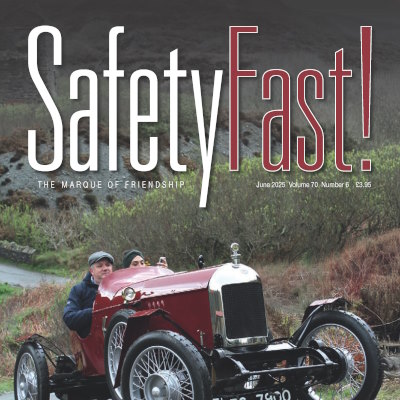The MG Metro is 25 this year
Reproduction in whole or in part of any article published on this website is prohibited without written permission of The MG Car Club.
This feature from the October 2007 edition of Safety Fast! follows the story of the MG Metro that was introduced to the world back in 1982.
It seems that only a few years ago the little MG Metro was introduced to the world. But twenty-five years have gone by, and the car is now getting rare. The Metro, (Austin, MG and Rover versions,) are disappearing fast. The survival rate of the model is very low indeed.
Back in the early 1980’s MG were to take a completely different tack on the car markets. The little open topped sports cars had all gone by 1981, not many firms were building open cars due to the American markets jittery attitude to the effects of one Ralph Nader and his cronies. However, the market was still there for a more sporting version of the mother company’s family saloons.
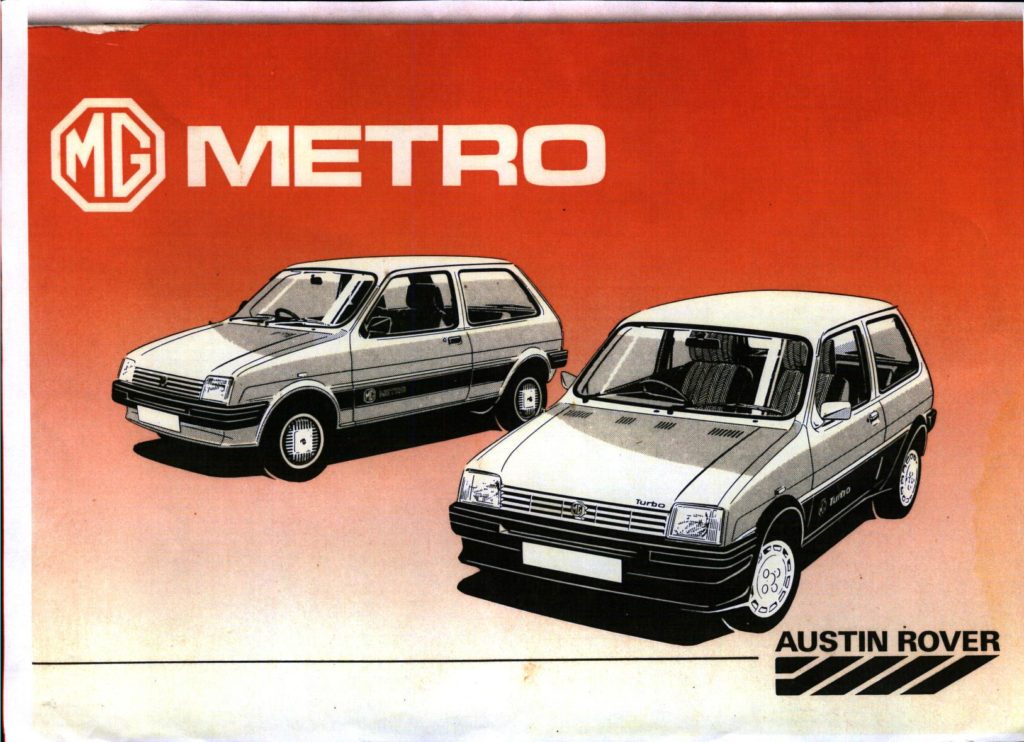
The end result was the triple-‘M’- MG’s of the Metro, Maestro and Montego. Triple ‘M’ how ever within MG circles refers to the pre-war Magnette, Magna and Midget, so we tend to refer to the later cars as the MG’M’ models. A fellow named Charles Griffin was the catalyst for the Metro, with Fred Coultas as the suspension designer. Griffin was responsible for guiding the car for years through the maze of BMC and BL till its actual production in 1982. The very first ADO88, as the design office had labelled the Metro, was shown to the public to test the water so to speak, failed miserably on its slab-sided styling.
This was quickly corrected by the now familiar crease that runs along each side of the car. As nearly everyone knew of the inception of the new model initially meant to replace the Mini, the Austin Allegro body was used to do the long term testing of the new Metro mechanics. ‘Metro’ was chosen from a vote at the factory by the workers in 1979, (the name ‘Maestro’ came second, and ‘Match’ was also popular.) The model was launched as an Austin on 8th October 1980.
The ADO88 was the Metro, though it was to change, and change again, and again, before it finally arrived as the LC8, (Leyland Cars model 8.) Poor BMC had plunged sidelong to become BMH which had eventually been taken over by Leyland. After the 1100/1300 ADO16 the management had lost their way. Finally the government assisted the ailing company and the Metro was born. Initially aimed at replacing the Mini, the two models eventually ran side by side, with the Mini Surviving the newer car by three years.
The Metro was a far better car than the Mini, it was quiet and comfortable, and far more refined. It was built by a long line of robots at a specially built factory at Longbridge, and with the Montego and Maestro at Cowley these were some of the most up to date factories in Europe for a while. The public loved the Metro, and brought them in the millions up until the end of production in 1998. By this time there had been four face lifts, and one major redesign under Rover in 1990, where the ancient 1275cc and 998cc ‘A’ series engines were replaced by a smooth Rover ‘K’ series 1.1 or 1.4, driving through a Peugeot gearbox.
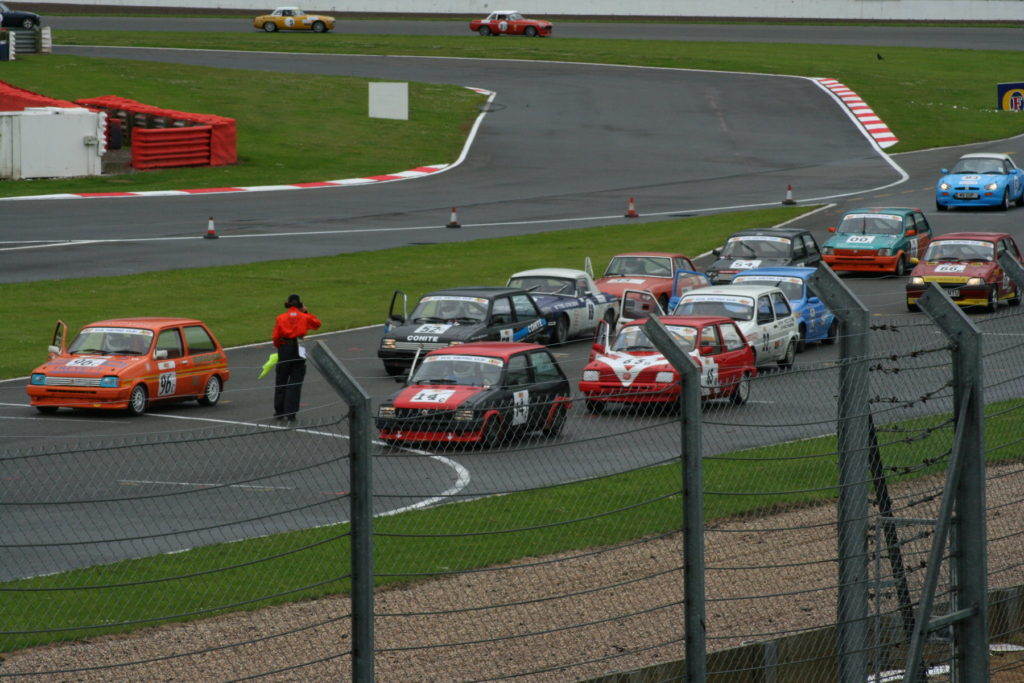
MG versions of the Metro 1300 and the Turbo ran from 1982 to 1990, making the model 25 years old in 2007. Along with a Van den Plas model the MGs were the top of the range of the many model versions on offer. The MG Metro costs £351 less than a Ford Fiesta XR2 on its debut.
The pundits were exasperated at an MG made from an Austin when they heard of the MG Metro, Maestro, and Montego. But there was already precedence for such action in the little 1961 MG Midget. This had been a straight clone of the AUSTIN Healey Sprite. How odd that people are prepared to forget certain facts if they do not suit their arguments. The new little MG was certainly popular and filled a niche in the market. It was certainly fun to drive, very safe, and quite fast, fulfilling the well know motto of MG, Safety Fast.
An earlier example of Austinisation of MG was the delay BMC put on the 1953 MG Magnette sports saloon, the ZA. This was to have had a Morris-based engine, but arrived fitted out with an Austin engine, gearbox, brakes and rear axle, (the everlasting ‘B’ series.) The ZA was the first car to be fitted with the 1489cc version. The MGA and MGB followed, also using similar Austin sourced running gear.
The end of production of the MG MGB in 1980 meant there were no more exports of MG’s to the USA for a while. In the UK the loss of an MG model only lasted for two years, as the company re-introduced itself into the sporting saloon market. Like all MG saloons, these were based on the parent company’s other models. This is a fact from MG Number One, which uses Bull Nose Morris parts, through the 1930’s Magnette and Magna, ( though these did become super-fast super-charged racing cars eventually,) to the Wolseley saloon based VA, SA, and WA of the late 1930’s.
Then post WW2 the YA and YB were firmly based on Morris Eight and Ten parts, the Z Magnette used the Wolseley 4/44 body and Austin A50 running gear, (also later used in the MGA,) till we reach the Farina Magnettes and the 1100-1300 front wheel drive cars of the 1960-70’s. These were badge engineered from stock Austin saloons, but with more powerful engines. Very few of the MG saloon range were made at Abingdon. One third of all MGs ever made are saloon cars (sedans); and one third of MGs ever made up to 1990 never saw Abingdon.
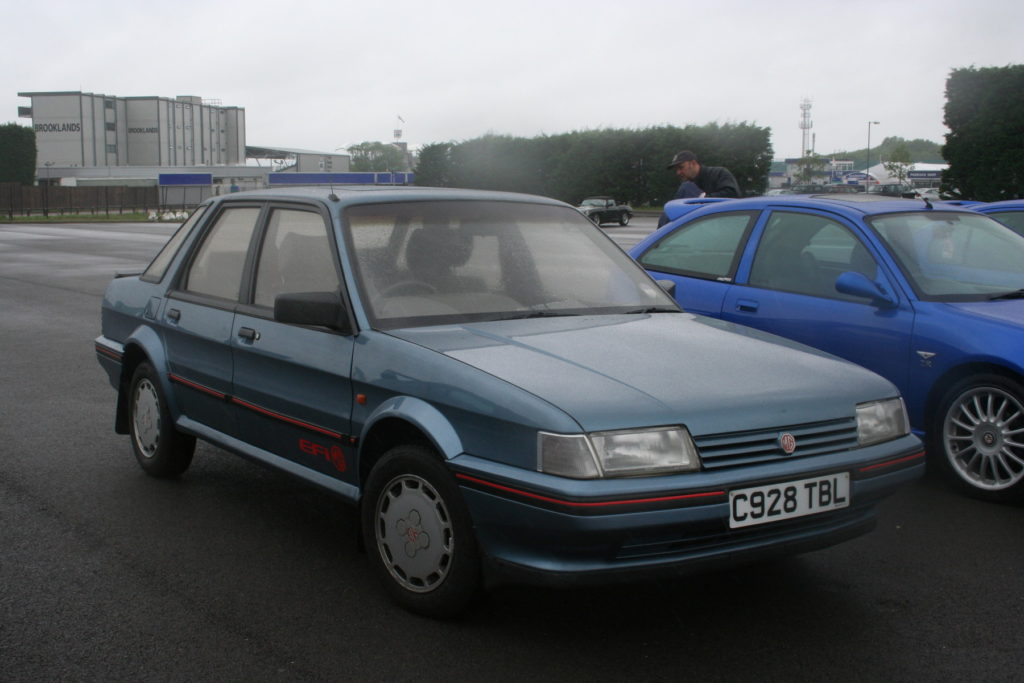
The little MG that rolled out of the Longbridge factory in 1982 was the MG Metro 1300. It was a true 100mph car. This car was a further development of the 1960’s 1100-1300 range, in that it used a front wheel drive engine, (virtually a large single carburetter version of the Mini Cooper ‘S’1275cc ‘A’ Series unit,) with a front and rear subframe taking the running components, rubber mounted to a rigid and very roomy shell. The ‘A’ series engine had been updated at a cost of thirty million pounds, but this was cheaper than designing a new engine from scratch.
It was called the ‘A Plus’ engine. The Metro used ‘hydrogas’ suspension units designed by Alex Moulton, but unlike the 1100-1300 range they were not interconnected, (but were on the later 1990 Rover Metro 1.1 and 1.4.) Between 1982 and 1989 Austin-Rover, (as the parent company had now become,) made 142,405 MG versions of the little Metro, not quite as many as the MG 1100/1300 ADO16G. In 1983 a very sporty version was built using an exhaust powered Garratt T3 turbo charger, and of the 142,405 MG Metros, some 21,968 were MG Metro Turbos.
The 1100-1300 MG saloon of 1962 to 1970 was the most prolific of MG saloon models; MG made 143,067, just beating the Metro figure. The Metro was initially to replace the little Mini, but fate led the Mini to last until 2001. The car that boosted Mini sales in the early 1990’s was the ‘new’ Mini Cooper, which used the single SU carburetter 1275cc engine lifted straight from the MG Metro 1300, but with a two-way catalyst fitted. This further use of the MG Metro’s engine was good news for future supplies of spare parts for the enthusiast.
The MG Metro 1300 was a sporting version of the ‘cooking’ Metro model, and only available as a two door. The standard 1980 Metro saloon was seen as a shopping car, a little town run-a-bout, and no threat to anyone. It could be had as a two or four door, a van, a pickup, and an automatic. It sold by the millions, and became just part of the UK street furniture. The arrival of the MG Metro 1300 in 1982 raised a few eyebrows, especially as it was a 100mph car, one of the fastest production MG saloons to that date, (in a country with a maximum speed limit of 70mph?)
The MG Metro used pepper-pot alloy wheels with a wider section tyre, ventilated front disc brakes, an improved ‘A-Plus’ version of the now ancient ‘A’ series engine, (which can date its birth back to 1951 in the Austin A30,) and a very tidy and plush interior with a good set of instruments on the dash board. This included the requisite tachometer as the 6500 rpm red line was important. The engine had bigger ports, larger valves, three-into-two-into-one long-centre-branch exhaust manifold with a water heated inlet. This was fed by a SU HIF 1.5” carburetter with air temperature adjustment, topped by a huge paper air filter element.
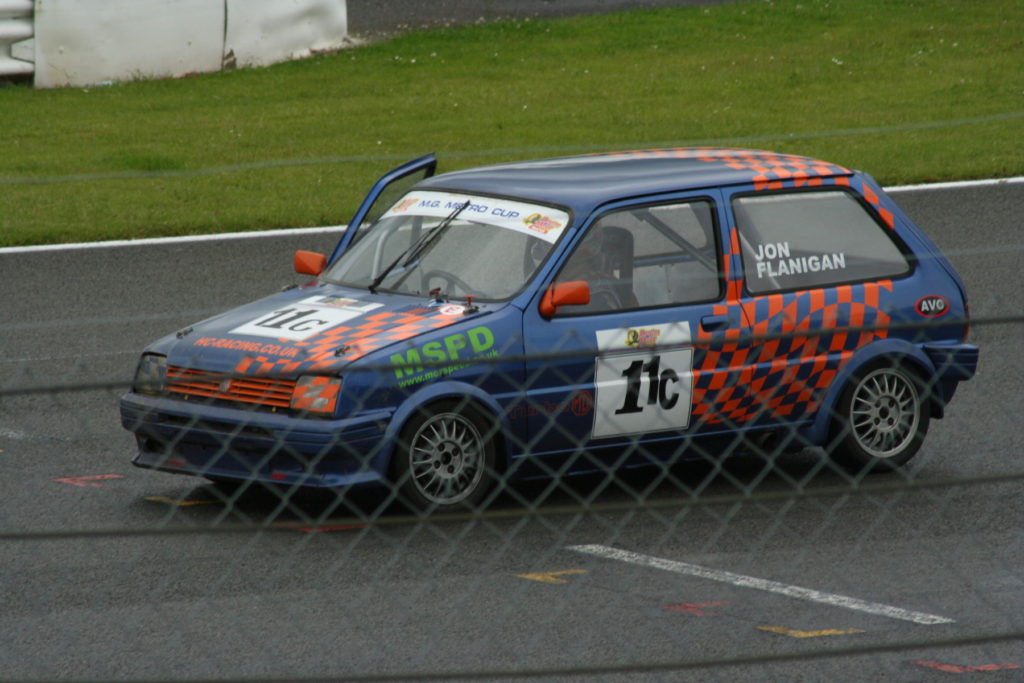
The engine looked externally just like any other of the millions of front wheel drive ‘A’ series, but it had a wide overlap camshaft with a mixture of the Mini Cooper ‘S’ 1275cc timings, at 9;41;49;11, with .318” lift at the valve, and a 10.3 to 1 compression ratio. From 1985 the MG Metro was fitted with Ducellier electronic ignition. Anyone who has heard a Mini Cooper ‘S’ engine idling, will identify with that of the MG Metro as the same uneven splutter. This mixture produced 72 bhp and 73 lb torque, giving the MG Metro a top speed of just on 100 mph, and a 0 to 60 of 11 seconds, a very good performance for a 1980 super-mini. A 1” thick front anti-roll bar kept things level, and the MG version of the Metro sat lower than the shopping versions.
The seats were a clever design as the split rear one either folded flat to give an ‘estate-car’ loading area, or just one third of the seat folded down giving one side for a shopping load. The ‘boot’ area (trunk,) was covered by a shelf that rose with the rear ‘hatch’ door. The whole front end of the car panelling and front wings was bolted on to cut the costs of accident repair. The rear of the MG had a spoiler to keep dirt off the rear hatch window. Other items fitted were rear screen wiper and wash, rear fog lamp (again now mandatory,) reversing lights, two speed wipers, wiper delay for light drizzle, heater, demister, dual braking system, reclining bucket type seats, radio/cassette with four speakers, and initially pepper-pot alloy wheels. The wheels became an option after 1986, and that year the ignition became electronic and central locking was fitted.
Today the early MG Metro’s are rare, even those from post 1985 are not so common. The reason is the standard MG Metro engine will fit easily into any Mini, and you get a jump from 50bhp to 72 bhp for a small cost. The Turbo’s are even rarer, as most are used for racing. Our UK weather and habits of throwing salt over our roads in winter has had the usual effect on corrosion.
Like any other car Metro’s have their weak areas, these being rusted out front valances that fix the front of the body to the forward end of the front subframe, and again the front mountings of the rear subframe, that are on the sills just under the rear seat. The cars are not of high value, so no one repairs them. They get scrapped, and their engines go into Mini’s.
The Metro was one of the last cars to have old-fashioned grease nipples fitted. Every 12 months four require attention, though personally I would pump in grease more often, as a common Mot failure area is the rear suspension trailing arm pivot roller-bearings. To drive they are not as much fun as a Mini, but have very similar road gripping performance. There is a lot of room in so small a car, and they are far more quiet and comfortable than any Mini or 1100-1300 ever was.
Their wedge-styling is not to every ones taste but very efficient, and the later ‘MG’ graphics on the body sides upset a few MG purists. But then enthusiasts never buy new cars, only old ones! The Metro itself continued in production as a Rover model until February 1998, by which time over two million had been built.
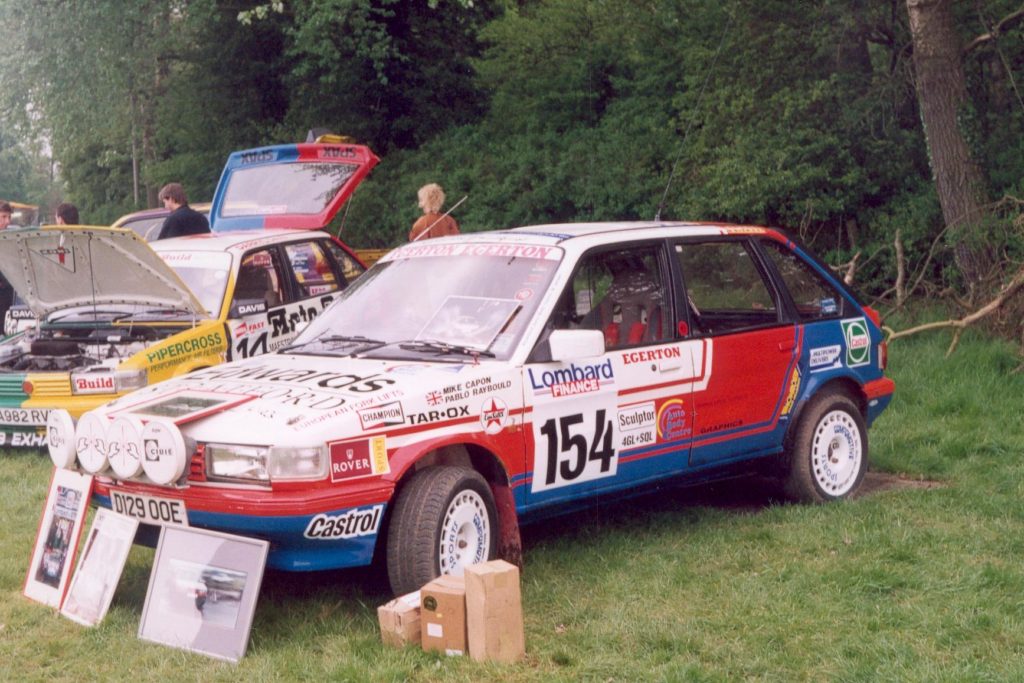
MG Metro Turbo
In 1982 a new MG was announced, the little MG Metro 1300. It used the staid old ‘A’ series engine in Cooper 1275cc tune, 10:1 compression ratio, giving a lumpy idle and a claimed 72bhp at the flywheel at 6000rpm. This engine has been about since 1952 when it appeared as an 803cc engine in the tiny Austin A30, and used what was almost a bit of bent wire for a crankshaft. Over the years it was upgraded, enlarged, strengthened and improved. In standard form, the MG Metro 1300’s ‘A’-Plus 1275cc engine performance was acceptable. Then to astound the critics, a ‘GT’ version appeared in 1983, and named the ‘MG Metro Turbo’.
This Turbo powered Metro was the brain child of one Geoff Kershaw of Leyland Cars. The Turbo used the standard Austin Metro camshaft and compression ratio of 9.4:1, not the MG Metro’s 1300 ‘Cooper’ version. It followed in the tradition of the then popular small hatch, boosting the potential of the tiny MG. Still using basically the same engine/gearbox, but with some important items strengthened, like a forged and nitrided crankshaft, (normal crank was flow-cast,) sodium filled exhaust valves, stronger pistons, improved big end and main bearings, 93bhp @ 6150rpm and 85lb/torque @ 2650rpm was produced. A veritable pocket-rocket, the MG Metro Turbo took to the roads. The weak part, ( there always has to be one,) was its ancient Mini-based gearbox, the 1959 Mini had just used the 1952 A30/A35 gearbox in its sump, and the A30 gearbox can in fact trace its ancestry through to the 1935 Austin Eight.
So to feed in the extra torque without blowing up the gearbox, and to beat turbo-lag, the clever MG Metro Turbo controls its boost pressure using an exhaust-waste-gate from 4psi @ 4400rpm up to 7psi @ 6000rpm. A Garratt Ai Research T3 Turbo-charger blowing through a sealed SU HIF44 carburetter,(note, not fuel injection,) a standard 9.4 to 1 compression ratio, and a solenoid operated exhaust-waste-gate on the turbo combined to eliminate most of the turbo-lag and protect the gearbox innards. The term ‘T3’ refers to the main body of the turbo charger, as the outer component parts are fitted to suit the installation, so a T3 from another model may not fit your Metro.
The waste-gate is simply a spring operated dump valve, worked by the pressure in the inlet manifold. The capsule in the inlet manifold is set to 4 psi on the Metro, and is connected by an adjustable rod to the waste gate valve in the exhaust manifold. When the pressure reaches 4 psi in the inlet manifold, the gate is opened for the exhaust gasses to by-pass the turbo so controlling the pressure. The Metro then uses electronic means to monitor the rpm to raise the boost to 7 psi at its maximum engine rpm. Unofficial increasing of the pressures can cause the pistons to melt as well as the central supporting web in the gearbox to crack. This web supports the final drive gear to the differential. The bearings of the idler gear between the crankshaft and gearbox suffer as well, and chew their way into the alloy castings. The Turbo engine runs very close to ‘detonation’ all the time.
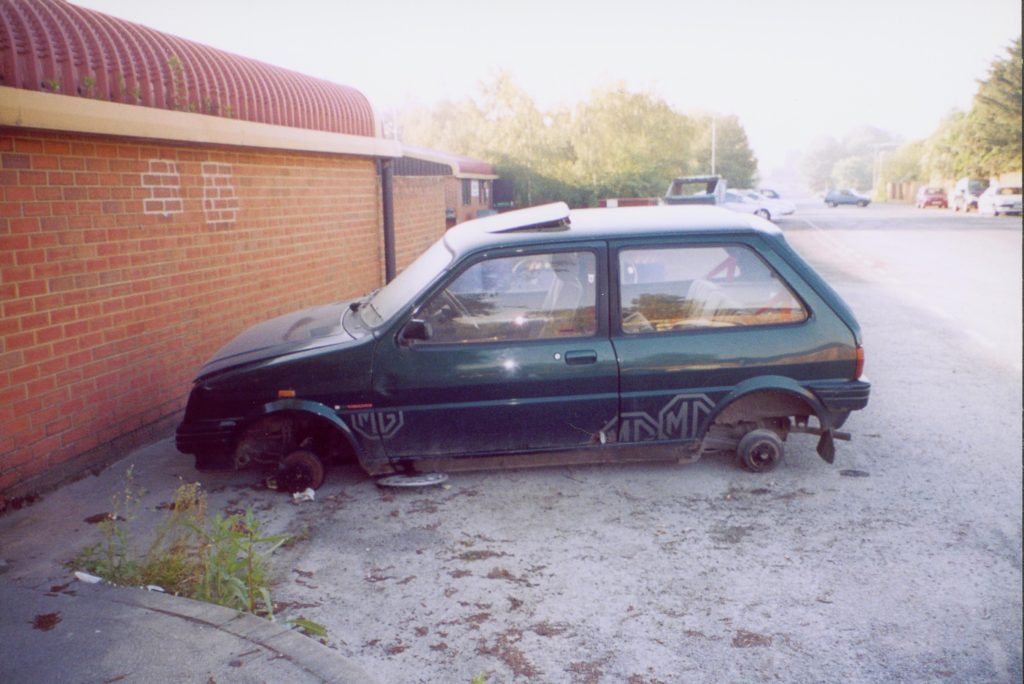
Fuel is pumped by a rear mounted Bosch electrical unit, with a control to monitor intake boost pressure to ensure fuel pressure is always above boost pressure. Otherwise the boost would blow the fuel back to the tank. Lotus racing had a hand in the cars development, and it was the fastest MG saloon up to that date, running up to a magic 113 mph. It was the most powerful production ‘A’ series engine, and the clutch was of the diesel type with a solid centre plate to take the torque, no damper springs to fall to bits.
Ducellier electronic ignition was used and an oil cooler was standard. Engine mounts were also stiffer, but there were problems with head gaskets blowing on the first few cars. The 12G 940 head casting used on the Turbo had a thinner head face, possibly for better cooling around the exhaust valves, but this permitted it to warp. The cure was to fit a head with the original thickness of metal.
9.4 seconds would see 60 mph on the speedometer, not bad for a car costing just £5,650 in 1983. The turbo is bolted at the rear of the engine to the cast iron exhaust manifold, and then blows into the sealed 1 ½” SU carburettor which feeds into the inlet manifold. Inlet air is filter before entering the compressor. The exhaust waste-gate controls the amount of gas used to drive the compressor, and is controlled by a boost sensor capsule and operating rod. To protect the whole system from too much boost pressure, there is a dump valve fitted to the inlet manifold before the carburettor.
When a car has fuel being pumped into the engine under pressure, one problem that could prove fatal is what happens if the engine stops and catches fire? In an accident modern cars have ‘inertia’ switches to switch off the pump; but the MG Metro is a bit old fashioned, as it uses a system to tell the electrically driven fuel pump when the engine is going, and when it is stationary. The oil pressure switch is responsible for keeping the fuel pump power relay energised. If the oil pressure drops to nil, the power to the pump is cut off. However, you have to start the car with no oil pressure, so the ignition starter position on the ignition key powers the fuel pump, but only when the starter is operating.
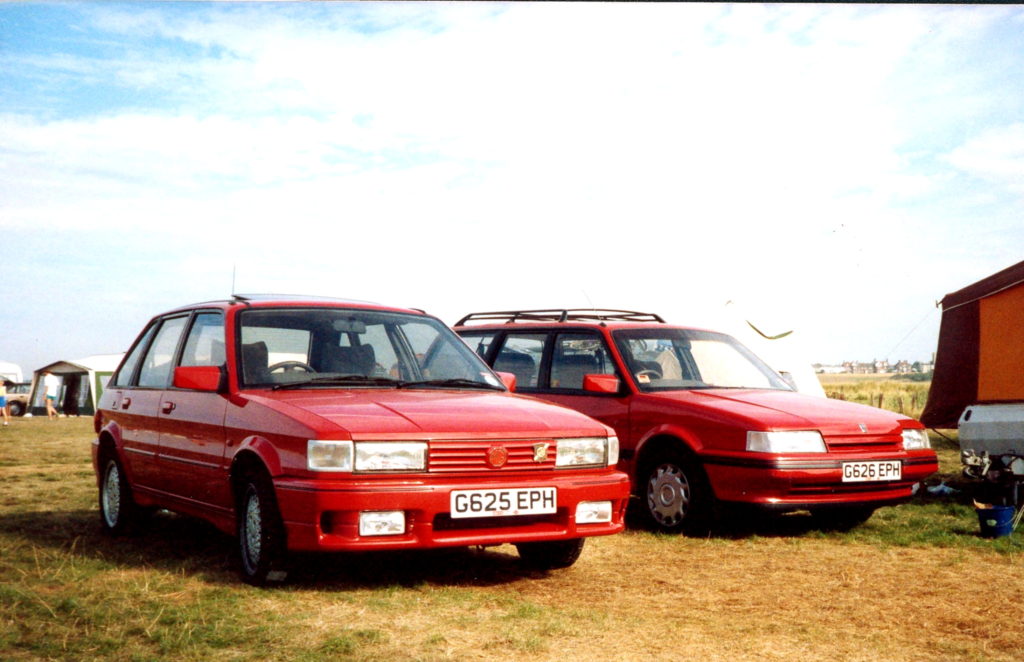
A problem that occurs in very high mileage Metro Turbo’s is at idle rpm with a very hot engine. If the oil pump is well worn, and with the hot thin oil, the oil light can come on because of the low oil pressure. This stops the fuel pump! The cure is a new oil pump, and probably an engine re-build if it is so worn. The oil pressure switch has caused many owners problems with older cars, if you thrash a Turbo (or any other Metro for that matter) bits of worn swarf from the gearbox-in-the-sump are drawn up into the oil pump.
This will quickly wear out the pump, as the oil filter is AFTER the pump. This results in low oil pressure, until it gets so low on idle the fuel pump thinks the engine has stopped, so stops itself. The car will start as the starter solenoid puts power direct to the fuel pump, but this ceases on the engine firing up. The cure is a new oil pump and these are not expensive, but it does mean taking the clutch end of the engine to bits.
Like a jet engine, switching off a turbo powered MG Metro without letting it idle for at least 10 seconds can ruin the turbo’s bearings. If you switch off immediately after a fast run the turbine will still be spinning at very high rpm, with no oil. On the MG Metro Turbo this can be as high as 130,000 rpm. The engine’s own oil system is used to feed the turbo bearings and cool them. Also, take care if running the engine with the air intake hose disconnected as the high speed of the compressor can cause serious, if not fatal, injury. Sucking in one of your spanners will ruin it, and flying shrapnel can maim and kill.
The MG Metro Turbo is destined to go into history as something special. By the end of production 21,968 MG Metro Turbos had been made. Only the very last few were fitted with lead-free cylinder heads.
(Condensed from the book “ MG Saloon Cars”, 1935-1990, by Neil Cairns.)

 MG Car Club
MG Car Club
